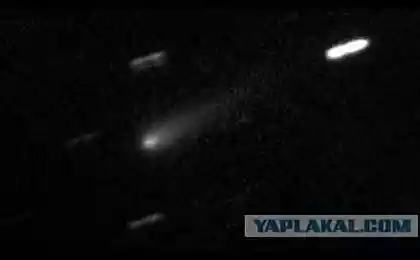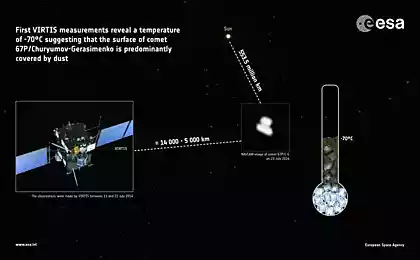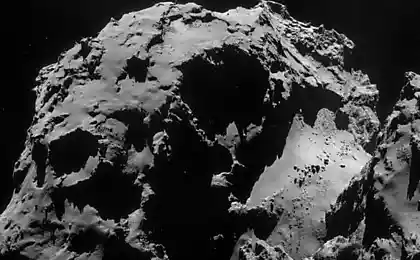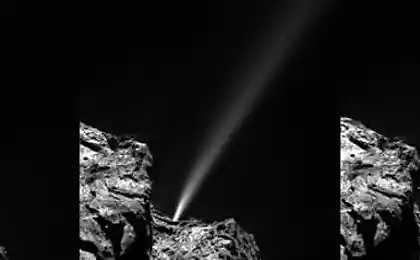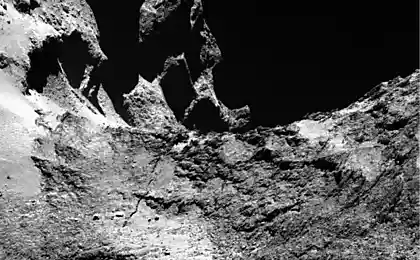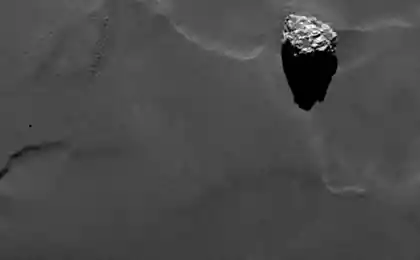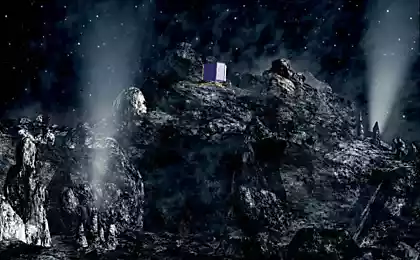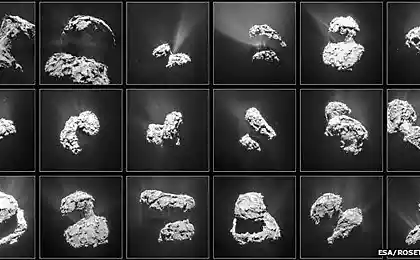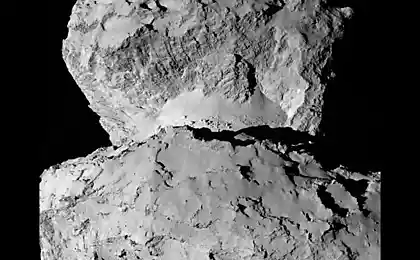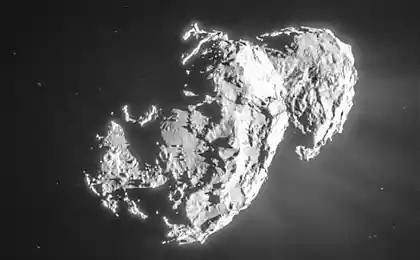1385
Interplanetary probe Rosetta: the first data to study the comet Churyumov-Gerasimenko
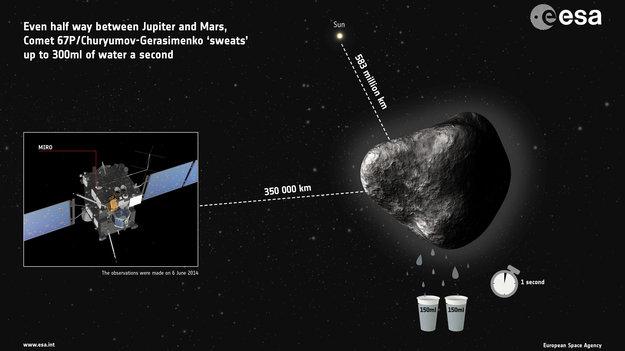
Most recently, interplanetary probe Rosetta performed third key maneuver to slow down, and photographed the comet Churyumov Gerasimenko . In addition, part of the scientific instruments station came into operation , and the first results of the station ready.
Station examined emissions of water comet (practically every comet throws a considerable amount of water vapor), and the scientists were able to calculate how much water is released into the second.
appeared that the comet now throws into space about 300 ml of water per second (for clarity, the scientists say about the two small plastic cups, of which usually drink water). Emission data obtained water tool Microwave Instrument for Rosetta Orbiter (MIRO). Scientists are very pleased with the sensitivity of the instrument, and say that he was surprised by how early (one month before the rendezvous with the comet) was able to quantify the loss of water comet Churyumov-Gerasimenko.
Incidentally, the actual evaporation rate is quite high - 100 days of water evaporation from current levels will be enough to fill an Olympic swimming pool. The closer to the Sun will be in this place, the more evaporation will take place, so most likely it will be possible to speak not about "cups per second, and on large volumes."
Water - one of the basic components of comets, also including compounds such as carbon monoxide (carbon dioxide), methanol and ammonia.
Studying the expiration of steam - an important task, which allows us to trace the evolution of cometary material, to investigate the effect of evaporation on the motion of the comet close to the celestial bodies, as well as to explain the processes of evolution of the solar system. It is possible that the study of comets and helps explain the appearance of water on our planet.
Via esa
Source: habrahabr.ru/post/228555/









